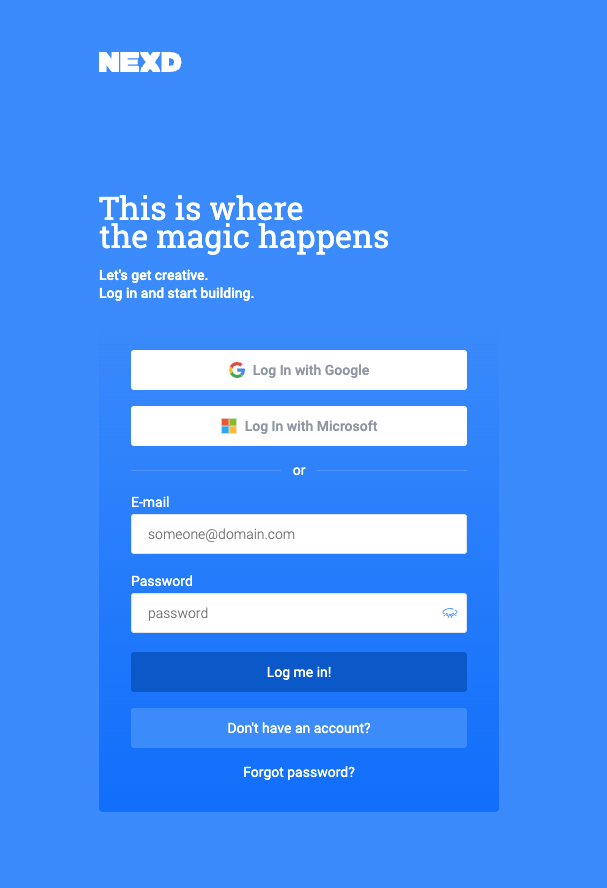Adaptive Streaming vs Buffering for Video Ads: A Comparison
There are several types of video content displaying available within the programmatic creative industry. The following article discusses how and why you should or should not use adaptive streaming in programmatic advertising, and what are the alternatives.
Traditional Streaming
To get started, let’s look at streaming in the wider sense.
Traditional streaming technologies typically distribute a fixed bitrate video stream. If the viewer’s network connection cannot support the bitrate, the video may buffer or not play smoothly. This approach can lead to poor viewing experiences, especially for users with slower connections or lower-end devices.

Video streaming is the continuous transmission of video files from a server to a client, allowing users to watch videos in real-time without needing to download the entire file. This technology enables the instant playback of videos over the Internet.
What’s the Right Technology in Advertising?
The main two options making rounds in advertising are buffering and adaptive streaming. Both types have their pros and cons.
Buffering has two main benefits, protecting the quality of your ad even in changing network conditions and being more sustainable due to the ad only being loaded to the point the users is watching, if the ad is skipped, no further data is used.
Adaptive streaming has the main benefit of adapting to the network conditions and offering continuous playback.
What is Buffering?
Definition: Buffering refers to the process of pre-loading video data into memory before it is played back. This helps to ensure a smooth playback experience by reducing interruptions caused by fluctuations in network speed.

How it works:
- When a user starts a video, a portion of the video data is pre-loaded (buffered) into the player’s memory.
- As the video plays, the player continues to load additional data ahead of the current playback point.
- If the network speed drops, the pre-buffered data can be used to continue playback without interruption.
Use Cases:
- Standard video playback on websites or apps where some initial buffering time is acceptable.
- Video ads are generally very short, between 6-30 seconds and they can be buffered immediately, without experiencing neither quality nor playback issues.
- Download-to-play scenarios where the video can be fully or partially buffered before playback begins, such as offline viewing in video apps.
Nexd uses buffering by downloading content to the viewers device in 5-second chunks. If the user doesn’t wish to finish watching the video, no additional data is wasted. It’s the most sustainable method for showing video ads.
Benefits of Buffering
- Smooth Playback Experience: By preloading data, buffering reduces interruptions, providing a consistent viewing experience.
- Reliable Quality: Ensures that the video plays at a steady quality without sudden drops due to network fluctuations.
- Control Over Playback: Advertisers can ensure that the ad is seen as intended, without the risk of quality degradation or buffering interruptions.
Cons of Buffering
- Initial Delay: Normally users might experience a buffering period before the ad starts, which could lead to higher bounce rates. This problem has been solved by Nexd by compressing technology that significantly reduces the file size, meaning it won’t be a problem to buffer it.
- Limited Adaptability: Unlike adaptive streaming, buffering does not adjust the video quality dynamically based on real-time network conditions, potentially leading to playback issues in fluctuating network environments if the video content is 10+ minutes long. However, that shouldn’t be an issue in advertising as the video content is never that long.
What is Adaptive Streaming?
Adaptive Streaming is a technology that dynamically adjusts the quality of a video stream in real-time based on the viewer’s internet connection and device performance to provide the best quality during the viewing experience.
Sometimes you watch videos online and they can be a bit slow or stop and start? That’s because the video is trying to fit through your internet connection, and if it’s too slow, it can’t keep up. However, that is generally meant for videos longer than 10-minutes.
Adaptive streaming is a way to make sure that doesn’t happen. It’s kind of like how you might adjust the volume on your TV based on how loud or quiet the room is. Adaptive streaming does something similar with the video, adjusting the quality based on how fast your internet is.
This way, you can watch videos without any interruptions or buffering, however, this also means that the quality of the video you are watching may change if the quality of the connection changes.

Benefits of Adaptive Streaming
Adaptive streaming offers several benefits in advertising, making it an increasingly popular choice for delivering video content. Here are the key advantages:
User Experience: Adaptive streaming adjusts video quality based on the user’s internet connection, minimising buffering and keeps showing the content, although the quality can change.
Downsides of Adaptive Streaming
Low Quality: if the network connection is slow, the video adjusts itself to keep playing meaning the quality might drop significantly. Advertisers have to consider that their content can be adapted to be shown in lower quality of the network conditions change.
Decreased Engagement: Users are less likely to abandon a video due to poor quality but they might miss crucial information or make negative associations with the content due to it being of poor quality.
Older Devices: Some older devices or browsers may not fully support adaptive streaming technologies like HLS or DASH, leading to playback issues or the need for fallback solutions.
Usage Purpose: Generally video ads are anywhere between 6-seconds to 2-minutes, with 15- and 30-second ads being the most common. Adaptive streaming makes sense of video content longer than 10-minutes, as buffering is uncommon for such short form content.
Conclusion
Adaptive streaming offers a dynamic approach to video ad delivery by adjusting quality based on the viewer’s internet connection and device capabilities, ensuring minimal buffering. This technology enhances user engagement by providing a smoother viewing experience. However, it faces challenges such as potential quality drops with slower connections. Adaptive streaming is well, adaptive, meaning the quality can/will change.
Buffering, on the other hand, ensures a consistent and reliable viewing experience by preloading video data, reducing interruptions regardless of real-time network fluctuations. This method guarantees steady quality and allows advertisers to maintain control over how the ad is presented, without the risk of sudden quality degradation.
Innovations like chunk-based downloading mitigate this issue and offer a sustainable and efficient solution for delivering high-quality video ads. Overall, buffering proves advantageous for shorter ads and environments where maintaining consistent quality is crucial.

